
Be the Referee: Hockey Rules Chart
February 6, 2020
This week, MHSAA assistant director Brent Rice addresses some of the rules differences between high school and college hockey.
Be The Referee is a series of short messages designed to help educate people on the rules of different sports, to help them better understand the art of officiating, and to recruit officials.
Below is this week's segment - Hockey Rules Chart - Listen
Today we’d like to take a look at some of the differences between high school and college hockey.
• During pregame, the high school coach must meet with officials to verify that all players are properly equipped. There is no such rule in college hockey.
• Hand passes are permitted in the defensive zone in high school hockey, but not in college hockey.
• Goalies may play the puck with a high stick in college hockey, but not in high school hockey.
• A puck directed into the goal with a skate may be allowed in college hockey, but not in high school hockey.
Knowing the rules differences can help you better enjoy watching this sport. You can find the complete chart of rules differences on the Ice Hockey page of the MHSAA Website.
Past editions
Jan. 30: Cheer Safety - Listen
Jan. 23: Goaltending - Listen
Jan. 16: Wrestling Tie-Breaker - Listen
Jan. 9: Pregame Meeting - Listen
Dec. 19: Alternating Possession - Listen
Dec. 12: Ratings - Listen
Dec. 5: Video Review Success - Listen
Nov. 28: More Injury Time - Listen
Nov. 21: Football Review - Listen
Nov. 14: Sideline Safety - Listen
Nov. 7: Officials Playlist - Listen
Oct. 31: Most Important Line - Listen
Oct. 24: Automatic 1st Downs - Listen
Oct. 17: Catch Momentum - Listen
Oct. 10: Golf Rules Changes - Listen
Oct. 3: No Tackle Box - Listen
Sept. 26: You Make the Overtime Call - Listen
Sept. 19: Swimming Finishing Touch - Listen
Sept. 12: Curbing Gamesmanship By Substitution - Listen
Sept. 5: Football Safety Rules Changes - Listen
Aug. 29: 40-Second Play Clock - Listen
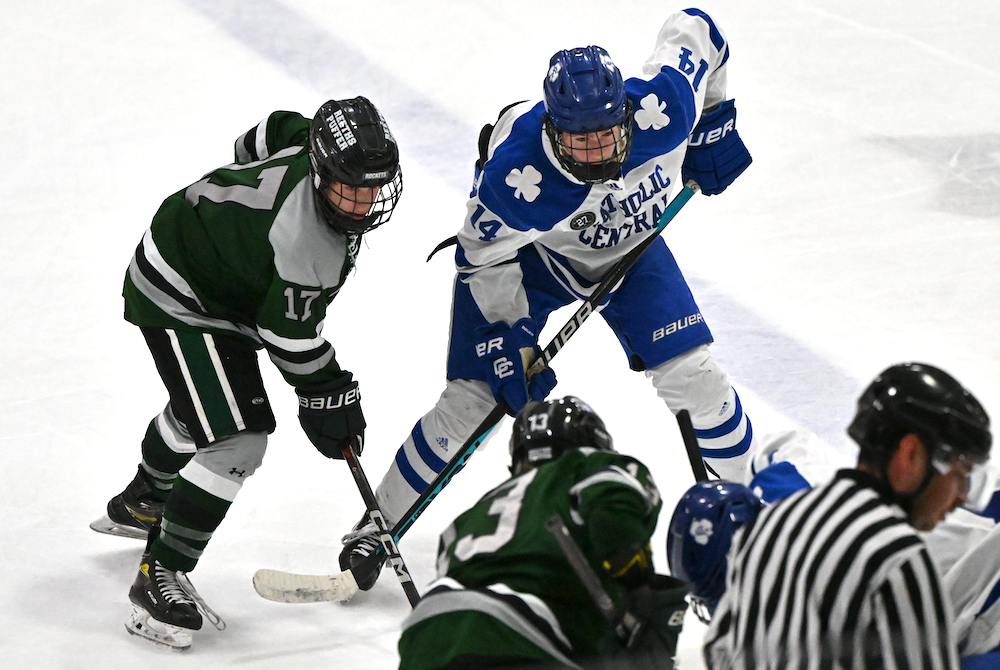
Story in Photos: 2024 Ice Hockey Semifinals
March 8, 2024
PLYMOUTH – The 2023-24 hockey season will conclude Saturday with a pair of championship matchups that followed the final coaches association rankings, and for the second straight season a Division 3 matchup that defies them.
Division 2 will start Saturday’s MHSAA Finals at 11 a.m. with top-ranked Byron Center facing No. 2 Trenton. Bloomfield Hills Cranbrook Kingswood will give the Division 3 Final an unranked contender for the second straight season, as the Cranes face No. 3 East Grand Rapids at 3 p.m. The Division 1 Final will feature top-ranked Detroit Catholic Central vs. No. 2 Brighton for the third straight season, with the puck dropping at 7 p.m. to finish the day at Plymouth’s USA Hockey Arena.
Hockey Weekly Action Photos captured plenty of action from the Semifinals – all photos below are by John Castine.
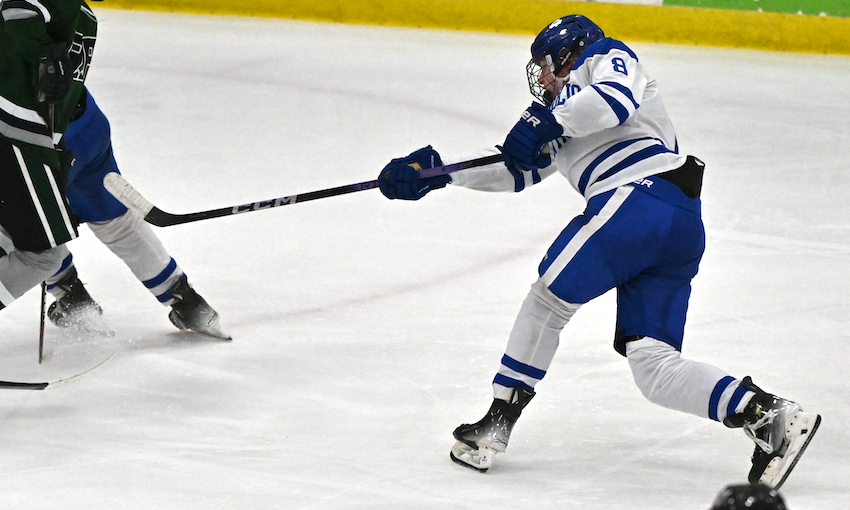
Detroit Catholic Central’s Cael Rogowski (8) sends a shot during his team’s Semifinal win over Muskegon Reeths-Puffer. Rogowski scored during the second period of the 8-0 victory.

Brighton’s Cameron Duffany (16) leads a rush up the ice during his team’s overtime 4-3 Semifinal win over Clarkston. He scored the game’s first goal and added a second during the second period.
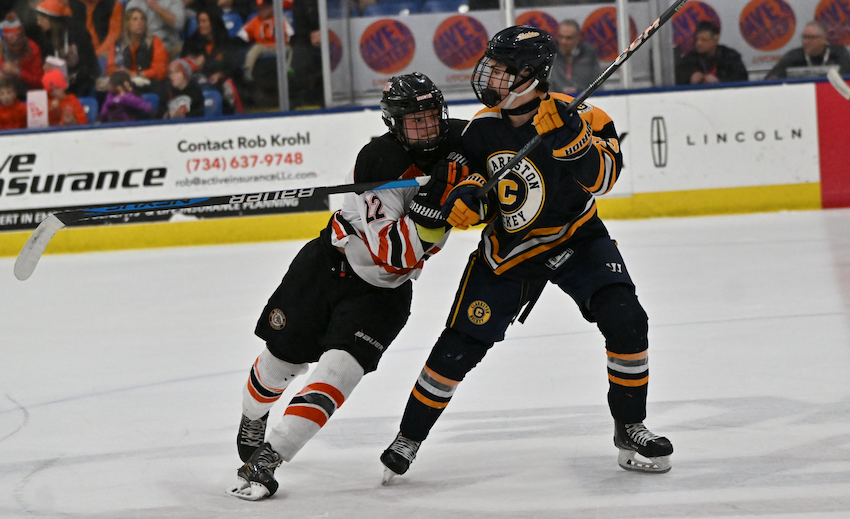
The Bulldogs’ Lane Petit (22) and Clarkston’s Trey Damian (23) work for position. Petit’s goal gave Brighton a 2-0 lead early in the second period.

Byron Center’s Collin Storey (22) rockets a shot during his team’s 6-2 Division 2 Semifinal win over Saginaw Heritage. He assisted on the game’s first goal.
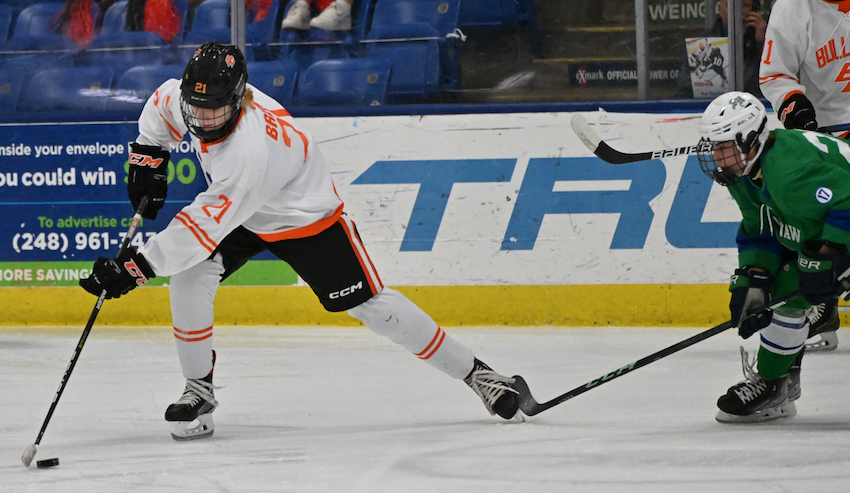
Kasey Brehm (21) retains control of the puck; he scored a second-period goal.

Trenton’s Liam Summitt (4) considers his options during his team’s 5-0 Division 2 Semifinal win over White Lake Lakeland. Summitt had two assists.
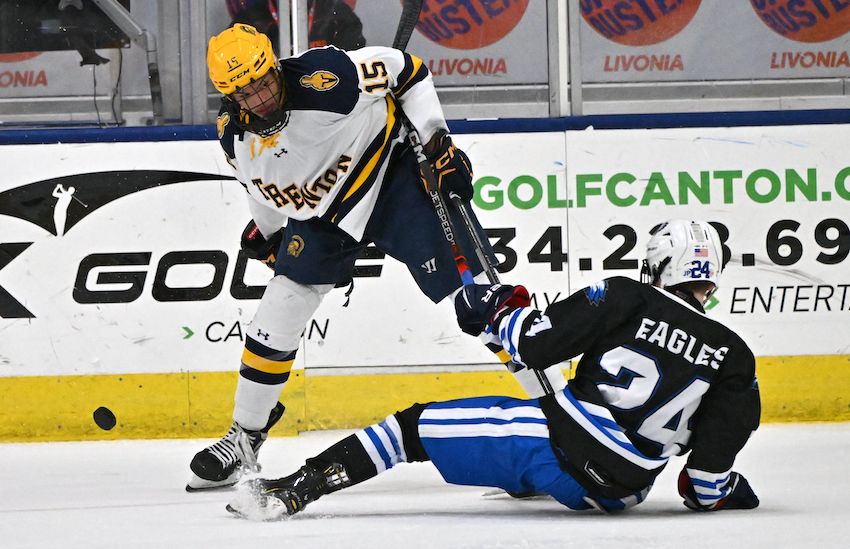
The Trojans’ Jayden Jones (15) and Eagles’ Joe Sesi (24) get tangled up. Jones scored the game’s first goal and added a second during the third period.
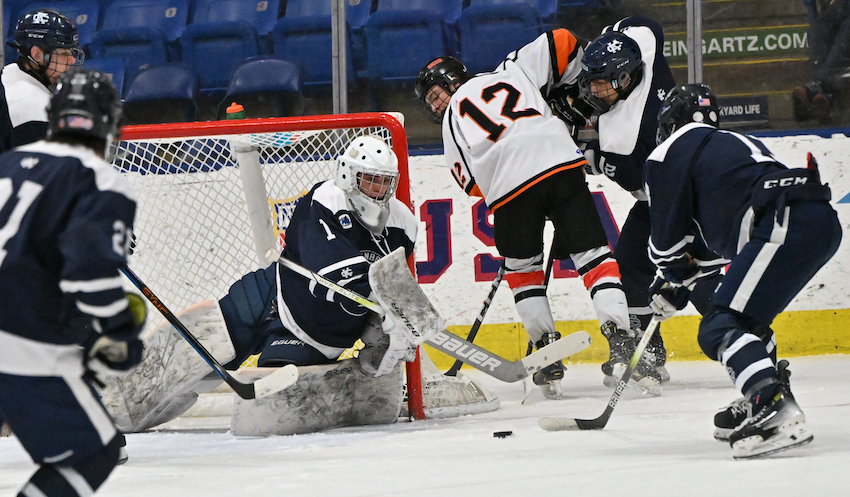
Bloomfield Hills Cranbrook goalie Garrett Dudlar covers the left side of the goal with a loose puck in front of the crease. Dudlar had 35 saves in the Cranes 5-0 Semifinal win over Houghton.
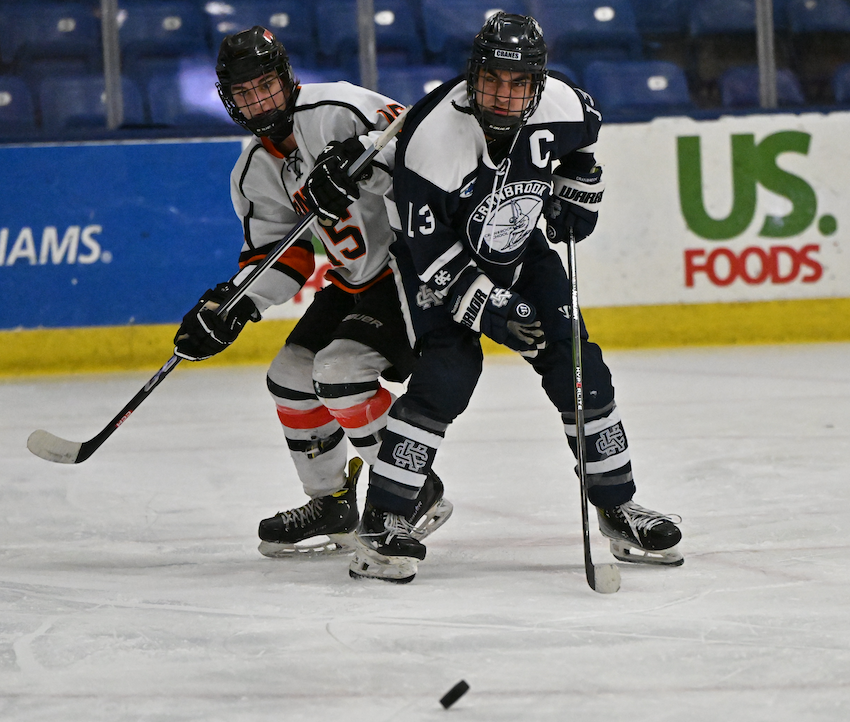
Cranes senior Michael Horton (13) and Houghton junior Jace DeForge pursue a loose puck. Horton had a goal and an assist.
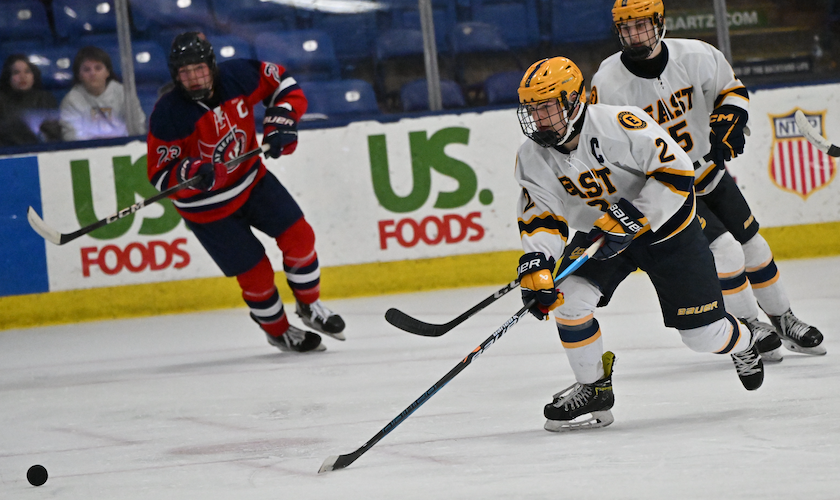
East Grand Rapids senior Ian MacKeigan charges toward the puck during his team’s 3-0 win over Traverse Bay Reps as the Pioneers earned their second-straight championship game berth.
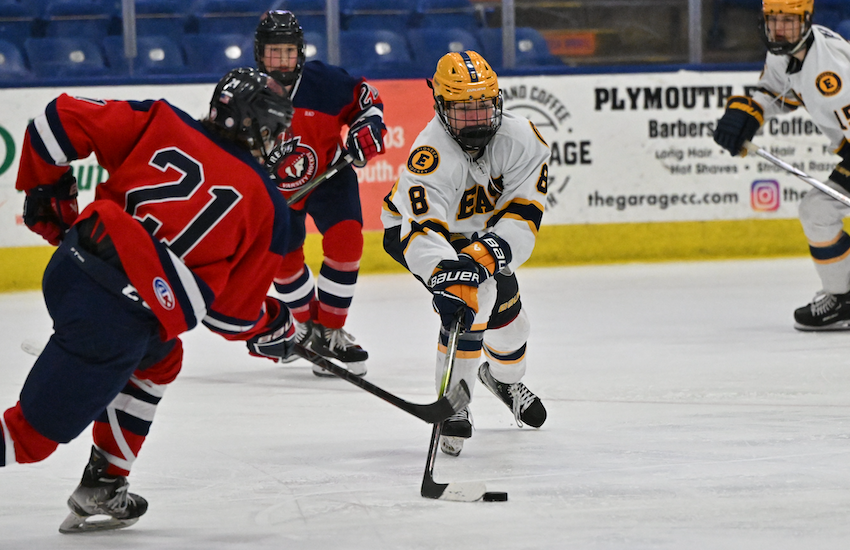
Pioneers senior Glenn Green (8) and Bay Reps senior Larson Millar work to gain possession.
TOP PHOTO Detroit Catholic Central’s Joshua Granowicz (14) and Muskegon Reeths-Puffer’s Eli Cuti (17) await a faceoff during their Division 1 Semifinal on March 8 at USA Hockey Arena.

